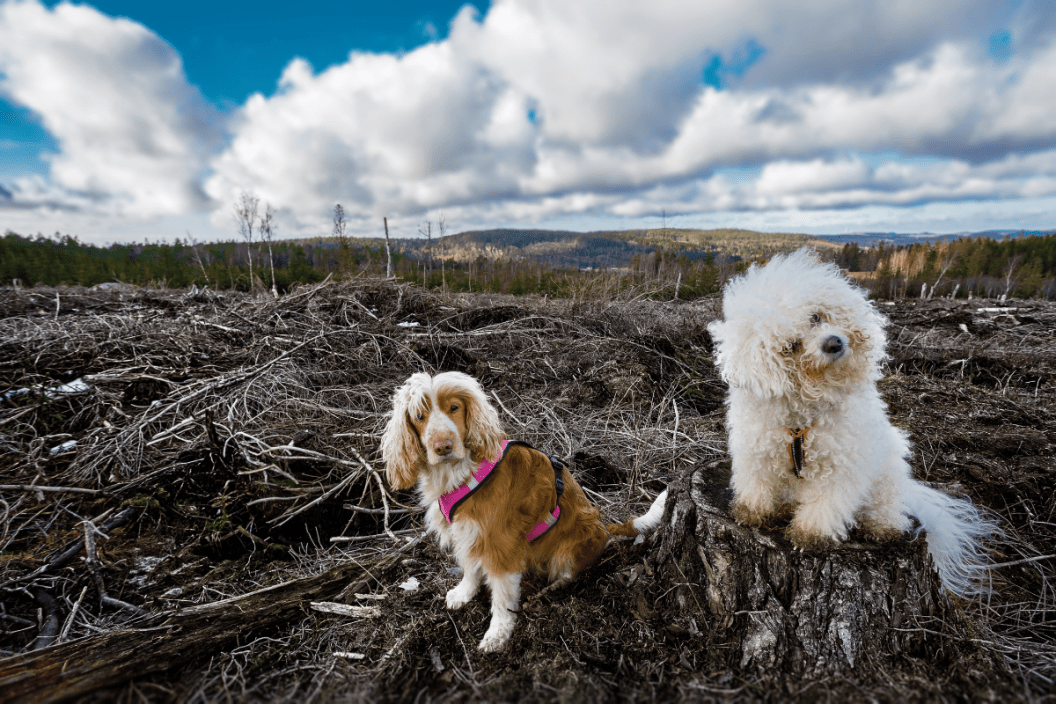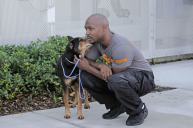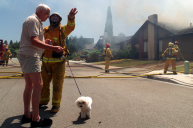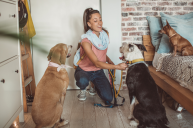Being prepared for disaster to hit is only half the battle for pet owners. The bigger part is handling pets after the dust settles.
Prepping for a natural disaster is just one part of living in areas prone to natural disasters, like hurricanes, tornadoes, wildfires, and floods. In the event disaster strikes, pet owners need to follow their emergency plan to get them and their pets to an emergency shelter.
Handling pets after a disaster can be difficult for many pet owners, even if they feel like disaster preparedness. It can be especially nerve-wracking if it is your first time actually putting all that prep work to use. To get a better sense of how to handle pets after a disaster, Wide Open Pets spoke with Yolanda Berkowitz, founder of Friends of Miami Animals Foundation and board member for the Humane Society of the United States.
What Should Pet Owners Have Ready To Go?
??? WARNING: #HurricaneHenri is headed quickly for the NJ/NY/CT area! Make sure you and your pets are prepared NOW: https://t.co/rhXDqnxpw2
REMEMBER: If it's not safe for you, it's not safe for your pets! pic.twitter.com/iLJWrKzbcL
— The Humane Society of the United States (@HumaneSociety) August 21, 2021
As soon as you know there is an emergency in the immediate area, you should have your disaster kit and pets kennel ready to go by your exit door. According to Yolanda Berkowitz, "Planning ahead is the best way to prepare for a disaster. In the event that you are required to evacuate, you should have an emergency pet kit packed and ready to go so that nothing is left to chance. Make sure that you have all essential items for your emergency pet kit."
According to Berkowitz, your emergency pet kit should include the following items:
- Collar and tags with a sturdy leash (include extras) ON YOUR PET
- ID tags, microchip ID, and rabies tag - REGISTER YOUR MICROCHIP
- Pet medications (ask your vet about keeping extra supplies/medications and a copy of prescriptions for your emergency kit)
- Medical records and current vaccinations
- Current photo of each pet with the owner in case of separation to prove ownership
- Manual can opener if your pet eats food from a can
- Canned or dried pet food to last for 5 days
- Enough water to last your pet for 5 days
- Cat litter, liners, and pans
- Plastic trash bags, newspapers, paper towels, and disinfectants for waste clean up
- Toys and any special comfort item for even a small amount of stress relief
- Your pet's crate (s) with bedding intact
Berkowitz noted that you should have a mapped-out evacuation plan for where you and your pet will go.
"Being prepared is the best way to ensure your pet is safe," wrote Berkowitz via email. There is no such thing as being over-prepared when there is an emergency, especially when handling your pets.
How Should Pets Be Transported During a Disaster?
Good Samaritans rescue 60 cows from floodwaters after Hurricane Ida https://t.co/xIosx9r8vR
— KLFY NEWS 10 (@KLFY) August 31, 2021
Pet safety should always be the first thing animal owners think about, even when it comes to leaving quickly in a disaster. According to Berkowitz, "A pet crate or carrier is the safest way to transport your pet in times of emergency, even your larger pets. Keeping your pet in a familiar, enclosed space will be the best chance you have at keeping them calm, close by, and safe during evacuation."
If a pet is not comfortable in their crate or pet carrier, it is best to get them acquainted with it before an emergency so they know it is a safe place. However, if, for whatever reason, your pet does not have a crate, Berkowitz says that you need to be sure that they are wearing their collar or harness with identification and current vaccination tags.
"Having your pets microchipped will also increase the chances that you'll be reunited with your pet in the case that they are lost during evacuation," she said.
Make sure your cell phone number is also on your pet's ID tag. Then, if they are picked up by local animal control and taken to your local animal shelter, they will be able to reunite you with your furry family members if they have all the correct emergency contact information.
What Do Pet Owners Do If Their Pet Cannot Stay With Them?
Amazing what Amador County Animal Rescue Team does! ACART handling large animal care, providing assistance needed #CaldorFire ? ACART volunteers deal with injured, fearful animals and would be very grateful for donations to help restock
mission: ClickThruLink in Bio ? pic.twitter.com/90V1fM51s0— Amador Community Foundation #ACFGives (@ACFgives) August 20, 2021
RELATED: Everything Your Pet's Disaster Preparedness Kit Should Include (Just In Case)
It is important that if you have to evacuate that your pet goes with you. While your pet may get picked up by first responders, it is more likely that your pet will get injured, lost, or killed if they are left behind. As a part of your disaster plan, Berkowitz says you can always evacuate early.
If you are unsure where your pet can stay with you, you can contact your local emergency management offices. Agencies that generally help with disasters may not accept pets in their temporary shelters. For example, the American Red Cross will not allow pets to stay with you. Plan ahead of a disaster to find a motel that your pet can stay with you.
Berkowitz says many pet-friendly hotels will let you keep your pet with you. Also, those who do not generally accept pets may make an exception and open up their accessibility to pet owners. If you are looking for boarding facilities or a place for you and your pet, Berkowitz says you can check out these sites:
- ringfido.com
- Dogfriendly.com
- Doginmysuitcase.com
- Pet-friendly-hotels.net
- Pets-allowed-hotels.com
- Petswelcome.com
- Tripswithpets.com
You can also reach out to friends and family members who live in a different area to see if you can stay with them. If you are frequently away from your home and concerned about your pet's well-being, you can use the buddy system. Make arrangements with a trusted neighbor to grab up your pet and emergency supplies if disaster strikes unexpectedly. Sometimes a wildfire or tornado may arrive when you are not at home, and you will not be able to get in to get your small animals and other pets out of your house, and it's pretty hard to carry a week supply of pet food and supplies like a litter box in your car!
However, make sure you keep a photo of your pet with you at all times just in case they end up at a pet shelter, and you need to prove that they are yours. You can also carry a waterproof container in the trunk of your car with some plastic bags, a pet first aid kit, and some pet emergency supplies so you can be prepared. There is nothing more stressful than worrying about your lost pet while you are trying to get to safety.
What Can Pet Owners Do If They're Separated From Their Pets?
?HOLD YOUR HORSES LIVESTOCK EMERGENCY RESPONSE TEAM?
has been rescuing animals and distributing animal feed during the #CaldorFire. https://t.co/dNterQFtsu pic.twitter.com/OJC7tvEfxt— Sarah Stierch ?????? ?? (@Sarah_Stierch) September 6, 2021
If you and your pet are separated in an emergency, you will get reunited with them the fastest if they are microchipped and have tags. However, if your pet does not have tags nor a microchip, Berkowitz says, " Share your pet's photo and information on social media and ask for the community's help." You can also visit the local shelter once it is safe to look for your pet. You can also check with your local vet or emergency vet in case they needed veterinary care.
Berkowitz added, "Local municipal shelters are the only group responsible for helping pets and pet owners during natural disasters."
She said in an email that the shelters will "likely serve as a communication hub before, during, and after the disaster." As a result, they are a pet owner's best resource for preparing for a disaster, what to do during, and how to find your pet after the danger has passed.
Shelters will also increase the length of time they will hold pets to give pet owners time to locate and retrieve their pets, according to Berkowitz. Handling pets after a disaster will go a lot more smoothly if you have your local shelter's locations and phone numbers ahead of time.
For additional resources for disaster planning, pet owners can go to the Humane Society, Ready.gov, or consult the CDC website.
Do you have a plan for handling pets after a disaster? Let us know on our Wide Open Pets Facebook page.




